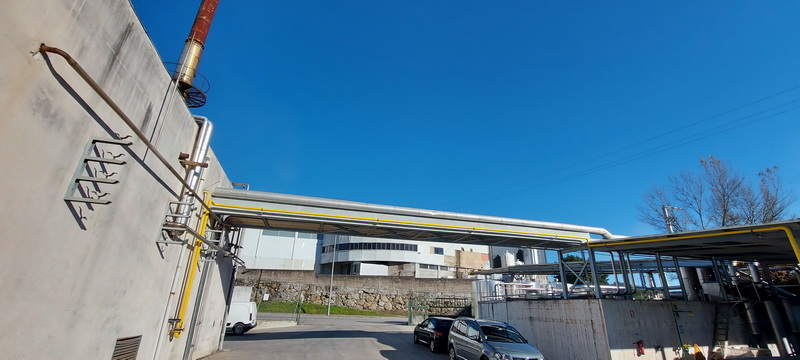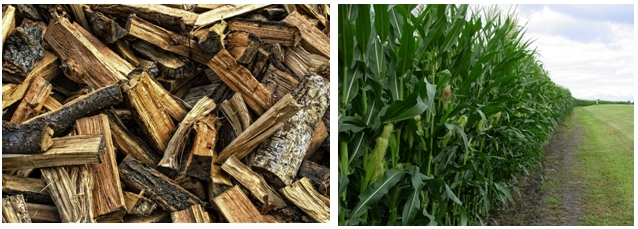
Biomass cogeneration not letting waste heat go to waste
Biomass CHP -Combined Heat and Power)- and trigeneration- Combined Cooling, Heating, and Power (CCHP)- is an efficient multi-energy-producing option from single combustion. tap the full potential of on-site power generation to manage overall energy consumption for commercial buildings, manufacturers, healthcare facilities, college campuses, military bases and other government and industrial enterprises. By capturing the heat that is normally lost during power generation, a cogeneration facility can supply hot water or heat as well as reliable, off-grid power. A trigeneration facility can supply cooling in addition to heat and off-grid power.
The global combined heat and power market size is expected to grow from $25.82 billion in 2022 to $27.73 billion in 2023 at a compound annual growth rate (CAGR) of 7.38%. The Russia-Ukraine war disrupted the chances of global economic recovery from the COVID-19 pandemic, at least in the short term. The war between these two countries has led to economic sanctions on multiple countries, a surge in commodity prices, and supply chain disruptions, causing inflation across goods and services and affecting many markets across the globe. The combined heat and power market is expected to reach $34.52 billion in 2027 at a CAGR of 5.63%.
Solid fuels include wood, forestry and forest industry residues, agricultural and agro-industrial residues and the biological fraction of wastes. Most solid fuels and some high solids content liquid industrial wastes (such as molasses and black liquors) can be directly fired in a combustion unit, producing heat which then powers a thermodynamic steam or ORC turbine cycle. State-of-the-art combustion plants are equipped to meet stringent environmental requirements.
Solid, relatively dry biomass feedstocks can, in particular at smaller capacity, be gasified by partial combustion to fuel gas. Wet biomass residues and wastes (sludges, vinasse, manure etc.) as well as crops and by-products such as molasses can be processed by anaerobic digestion to thermal energy and electricity as the main energy-carrying component.
In Europe there are various processes for the production of power and heat from biomass, and some 1,000 biomass-fired and around 17,000 biogas CHP facilities were operational in EU28. Taking Sweden as an example (where biomass CHPs cover 72% of total CHP electricity production), biogas facilities typically have capacities below 1 MWel and biomass CHPs are typically in the range of 1 – 50 MWel2.
Biomass-fueled CHP or cogeneration is one of the applied technologies developed as a cost-effective method of energy recovery. Because the by-product heat generated in electricity generation is not wasted, but rather utilized as thermal energy, the total efficiency of such systems reaches 60-80%.
There are three main stages in the biomass-fueled CHP process:
- biomass collection and preparation
- biomass conversion: (i) to steam or (ii) to biogas
- power and heat generation
These three stages are integrated in one installation.
The following bio resources are considered for energy recovery:
- energy crops and crop residues
- forest residues and wood waste
- manure biogas and wastewater treatment biogas
- food processing residue
- municipal solid waste (MSW)
- landfill gas

Biomass CHP advantages
The biggest benefit is the combination of economic efficiency and climate protection. Biomass cogeneration plants usually convert more than 85 percent of the fuels used into usable energy. If you then also use the cost-effective and at the same time environmentally friendly wood pellets or wood chips as fuel, you save noticeable money.
High efficiency
The simultaneous production of electricity and heat results in the use of over 85 percent of the fuels.
Less CO2 emissions
By using wood as biomass, the raw material cycle is CO2-neutral. In addition, biomass CHP units primarily use residual and waste wood.
Value enhancement
A biomass CHP plant can be designed as an integral part of the building and increases the value of the property. Alternatively, biomass CHP units can also be built in containers and can be used flexibly.
Weather independence
Unlike wind energy and solar plants, biomass CHP units operate completely independently of weather conditions and the time of day. The biomass CHP units run when there is no wind, rain, snow and frost, and of course also at night.
Independence
Providers make themselves independent of the expensive electricity of the large energy suppliers. Another bonus in terms of independence: In the event of power outages, a biomass cogeneration plant continues to generate electricity.
Long maturities
The plants are designed to operate for 7,000 to 8,000 hours per year. In individual cases, there are plants that even exceed this in practice.

